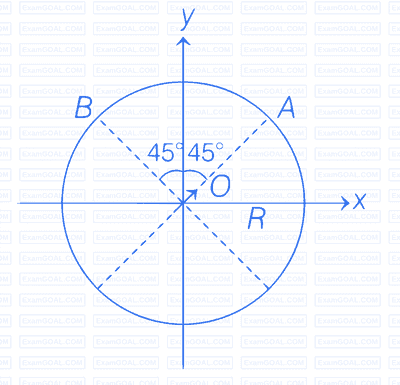1
JEE Advanced 2020 Paper 2 Offline
MCQ (More than One Correct Answer)
+4
-2

Two identical non-conducting solid spheres of same mass and charge are suspended in air from a common point by two non-conducting, massless strings of same length. At equilibrium, the angle between the strings is $$\alpha$$. The spheres are now immersed in a dielectric liquid of density 800 kg m$$-$$3 and dielectric constant 21. If the angle between the strings remains the same after the immersion, then
2
JEE Advanced 2020 Paper 1 Offline
MCQ (More than One Correct Answer)
+4
-2

A uniform electric field, $$\overrightarrow E = - 400\sqrt 3 \widehat y$$ NC−1
is applied in a region. A charged particle of mass m
carrying positive charge q is projected in this region with an initial speed of 2$$\sqrt {10} $$ $$ \times $$ 106 ms−1
. This
particle is aimed to hit a target T, which is 5 m away from its entry point into the field as shown
schematically in the figure.
Take $${q \over m}$$ = 1010 Ckg−1 . Then
Take $${q \over m}$$ = 1010 Ckg−1 . Then

3
JEE Advanced 2019 Paper 2 Offline
MCQ (More than One Correct Answer)
+4
-1

An electric dipole with dipole moment $${{{p_0}} \over {\sqrt 2 }}(\widehat i + \widehat j)$$ is held fixed at the origin O in the presence of a uniform electric field of magnitude E0.

If the potential is constant on a circle of radius R centered at the origin as shown in figure, then the correct statement(s) is/are, ($$ \in $$0 is the permittivity of the free space, R >> dipole size)

If the potential is constant on a circle of radius R centered at the origin as shown in figure, then the correct statement(s) is/are, ($$ \in $$0 is the permittivity of the free space, R >> dipole size)
4
JEE Advanced 2019 Paper 1 Offline
MCQ (More than One Correct Answer)
+4
-1

A charged shell of radius R carries a total charge Q. Given $$\phi $$ as the flux of electric field through a closed cylindrical surface of height h, radius r and with its center same as that of the shell. Here, center of the cylinder is a point on the axis of the cylinder which is equidistant from its top and bottom surfaces. Which of the following option(s) is/are correct?
[$$ \in $$0 is the permittivity of free space]
[$$ \in $$0 is the permittivity of free space]
Questions Asked from Electrostatics (MCQ (Multiple Correct Answer))
Number in Brackets after Paper Indicates No. of Questions
JEE Advanced 2025 Paper 2 Online (2)
JEE Advanced 2024 Paper 2 Online (1)
JEE Advanced 2022 Paper 2 Online (2)
JEE Advanced 2022 Paper 1 Online (1)
JEE Advanced 2020 Paper 2 Offline (1)
JEE Advanced 2020 Paper 1 Offline (1)
JEE Advanced 2019 Paper 2 Offline (1)
JEE Advanced 2019 Paper 1 Offline (1)
JEE Advanced 2018 Paper 2 Offline (1)
JEE Advanced 2017 Paper 2 Offline (1)
JEE Advanced 2015 Paper 2 Offline (1)
JEE Advanced 2015 Paper 1 Offline (1)
JEE Advanced 2014 Paper 1 Offline (1)
JEE Advanced 2013 Paper 2 Offline (1)
IIT-JEE 2012 Paper 2 Offline (1)
IIT-JEE 2012 Paper 1 Offline (1)
IIT-JEE 2011 Paper 1 Offline (1)
IIT-JEE 2011 Paper 2 Offline (1)
IIT-JEE 2010 Paper 1 Offline (1)
JEE Advanced Subjects
Physics
Mechanics
Units & Measurements Motion Laws of Motion Work Power & Energy Impulse & Momentum Rotational Motion Properties of Matter Heat and Thermodynamics Simple Harmonic Motion Waves Gravitation
Electricity
Electrostatics Current Electricity Capacitor Magnetism Electromagnetic Induction Alternating Current Electromagnetic Waves
Optics
Modern Physics
Chemistry
Physical Chemistry
Some Basic Concepts of Chemistry Structure of Atom Redox Reactions Gaseous State Chemical Equilibrium Ionic Equilibrium Solutions Thermodynamics Chemical Kinetics and Nuclear Chemistry Electrochemistry Solid State Surface Chemistry
Inorganic Chemistry
Periodic Table & Periodicity Chemical Bonding & Molecular Structure Isolation of Elements Hydrogen s-Block Elements p-Block Elements d and f Block Elements Coordination Compounds Salt Analysis
Organic Chemistry
Mathematics
Algebra
Quadratic Equation and Inequalities Sequences and Series Mathematical Induction and Binomial Theorem Matrices and Determinants Permutations and Combinations Probability Vector Algebra 3D Geometry Statistics Complex Numbers
Trigonometry
Coordinate Geometry
Calculus